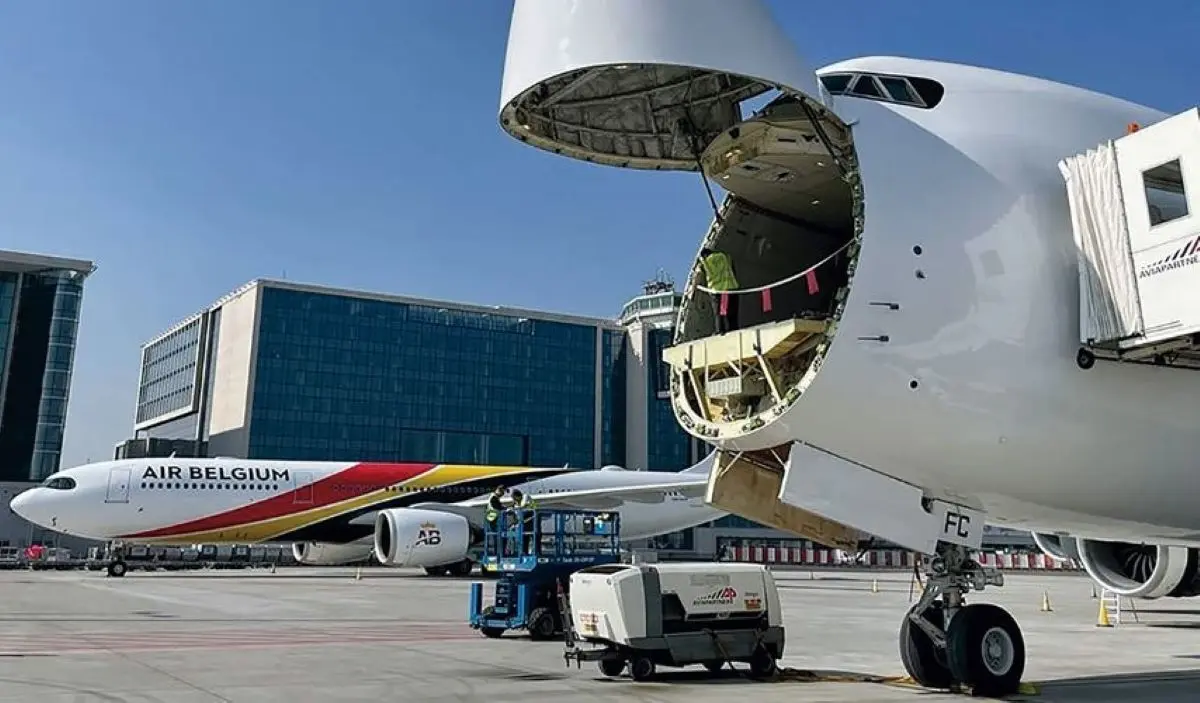Understanding the Growth in Cargo Air Traffic
In May, global cargo air traffic reported a modest increase of 2.2% when compared to the same month last year. This growth, although positive, signals the complexities affecting the air freight industry, highlighting underlying trends that logistics professionals must consider.
Monthly Traffic Insights
The air cargo traffic during May was quantified at just a 2.2% year-on-year growth. However, a comparison month-to-month reveals a slight decline of 1%. These figures, measured in tonne-kilometers, indicate fluctuations in demand and capacity that can directly influence 出荷 strategies going forward.
Trade Dynamics and Their Effects
Analyzing the dynamics of cargo traffic unveils significant challenges, particularly those stemming from ongoing trade tensions. The US trade policies have notably impacted the air cargo industry, contributing to shifts in traffic patterns between major regions, such as アジア そして 北米. For instance, the anticipation of increased tariffs has prompted shippers to stockpile orders, which can lead to sudden shifts in demand patterns.
Impact of Tariff Policies
Recent shifts in tariff policies have also put pressure on freight movement. The end of duty exemptions for parcels valued under $800 has exerted an especially heavy toll on air shipments. Given that many of these smaller packages are typically transported by air, the effects on logistics and delivery efficiencies are profound and warrant careful consideration from industry experts.
Regional Traffic Variations
Traffic to and from the 米国 has notably decreased, particularly affecting North American airlines. Conversely, the corridor between アジア そして ヨーロッパ has shown robust growth with an impressive 13.4% year-over-year increase, providing a point of optimism amidst the more subdued outlook elsewhere.
Capacity and Freight Rates
A record capacity of 52,600 million tonne-kilometers was achieved in May 2025. However, this surge in capacity comes alongside a decrease in freight rates, which fell 2.9% year-over-year and 3.7% month-over-month. Declining fuel prices coupled with a drop in demand on the Trans-Pacific route are critical factors contributing to this decline.
Future Prospects and Industry Predictions
について OECD has revised its global GDP growth forecast, suggesting a reduction of 0.2 percentage points for 2025, now predicted at +2.9%. This shift indicates a broader global economic slowdown that may also slow down trade volumes. The anticipated deceleration in global commerce and manufacturing output, alongside weak projections for the manufacturing sector, hint at potential challenges for logistics.
Manufacturing Trends
A drop in the global manufacturing purchasing managers’ index (PMI) below 50 signals a contraction—an indicator that can forecast declines in 出荷 そして 輸送. The PMI recorded 49.1 in May, reflecting an increasingly cautious sentiment within the industry. The repercussions of such economic data can ripple through the logistics sector, influencing demand for air freight services.
市場の変化への対応
In the logistics landscape, adapting to shifts in market conditions is paramount. The effects of simplified tariffs, changes in shipping routes, and fluctuating fuel prices must be navigated carefully. Professionals in the industry are encouraged to monitor these trends closely to ensure their distribution strategies remain both efficient and effective.
What This Means for Logistics Professionals
As the air cargo industry adjusts to various economic factors, logistics specialists must remain vigilant. The increasing intricacies of global supply chains, as seen with air traffic trends, necessitate a deep understanding of shifting dynamics. Platforms like GetTransport.com assist in navigating these complexities, providing affordable global cargo transportation solutions ideal for office and home moves, large item deliveries, and more.
最終的な考察とまとめ
In summary, while the world saw a 2.2% annual increase in cargo air traffic for May, a myriad of factors—from trade implications to shifts in freight pricing—exerts pressure on the logistics industry. Ultimately, these fluctuations underscore the importance of understanding the broader economic picture when planning for future logistics strategies. On GetTransport.com, one can find a reliable partner in ensuring that cargo transport remains efficient and cost-effective, meeting diverse transportation needs seamlessly. The platform’s commitment to service transparency allows customers to make informed decisions without unnecessary costs or surprises.
While reviews and feedback provide valuable insights, there’s nothing quite like personal experience to gauge service quality. With GetTransport.com, ordering cargo transportation at unbeatable rates is just a click away. This empowers clients to capitalize on choices without overspending. For your next relocation or shipment needs, consider the advantages of GetTransport.com and the smooth logistics solutions it offers. Remember, planning helps pave the way for success. Book now on GetTransport.com!

 5月の世界の貨物航空輸送量は前年比2.2%の増加">
5月の世界の貨物航空輸送量は前年比2.2%の増加">